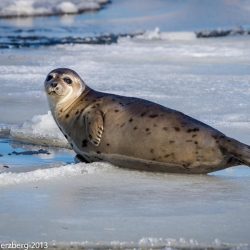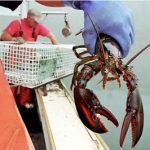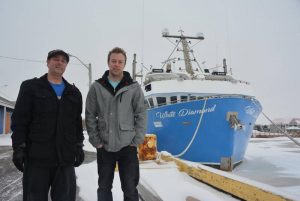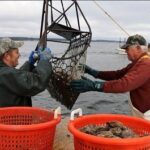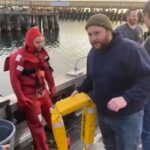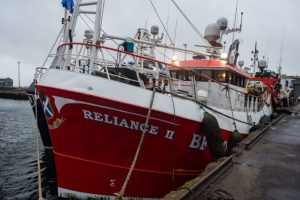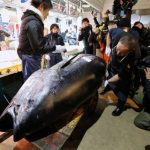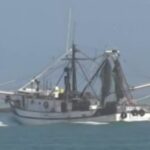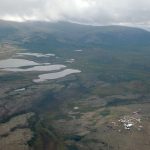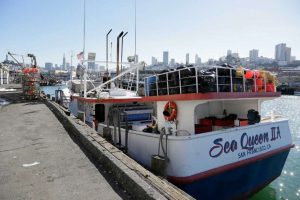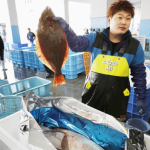Tag Archives: harp seals
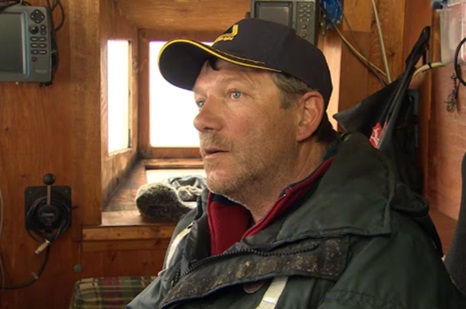
An appeal for seal: Supporters say it’s time to review bans on ‘sustainable’ industry
Fisheries managers allow some 400,000 harp seals to be harvested annually, but the allowable catch hasn’t been taken in the past 15 years. These days, hunters only take about 40,000 seals because of international bans that have dramatically reduced access to markets. The United States has had a ban on seal products since 1972, the European Union banned seal products in 2009, and the Chinese market also has restrictions. But while the sealing industry struggles to stay alive, it’s a way of life that continues. Eldred Woodford, president of the Canadian Sealers Association, has been eating seal his entire life. He’s frustrated that more people aren’t seeing the value of an abundant food source just off the coast. “It’s a waste of a resource. That’s what it is,” he said. more, >>click to read<< 10:03
Seal overpopulation having ‘significant and damaging impact’ on Canadian fish stocks: report
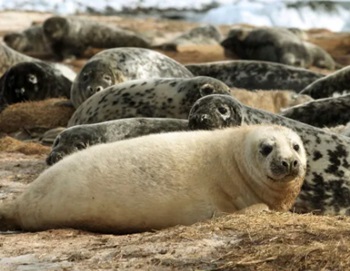 Canadian parliamentarians are warning that seal populations pose a danger to fish stocks and are upsetting marine ecosystems in the Pacific, Arctic and Atlantic oceans. A bipartisan report from the House of Commons standing committee on fisheries and oceans says urgent measures are needed from the federal government and the Department of Fisheries and Oceans, including an increase in the humane seal harvest. “This report’s objective is to draw the attention of DFO, relevant departments and the Canadian government to important observational and empirical evidence that the overpopulation of pinnipeds on Canada’s three coasts is having a significant and damaging impact on the health and conservation of fish stocks and is creating an imbalance in our marine ecosystems,” the study concludes. more, >>click to read<< 18:00
Canadian parliamentarians are warning that seal populations pose a danger to fish stocks and are upsetting marine ecosystems in the Pacific, Arctic and Atlantic oceans. A bipartisan report from the House of Commons standing committee on fisheries and oceans says urgent measures are needed from the federal government and the Department of Fisheries and Oceans, including an increase in the humane seal harvest. “This report’s objective is to draw the attention of DFO, relevant departments and the Canadian government to important observational and empirical evidence that the overpopulation of pinnipeds on Canada’s three coasts is having a significant and damaging impact on the health and conservation of fish stocks and is creating an imbalance in our marine ecosystems,” the study concludes. more, >>click to read<< 18:00
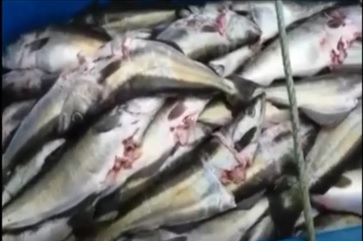
Seal summit slated for the fall in St. John’s
More research is needed on the impact of seals on dwindling east coast fish stocks, federal Fisheries Minister Joyce Murray said Thursday,,, Speaking outside a seafood processing plant, Murray drew applause when she said she knows “seals eat fish.” “So, that’s the reason we need to better understand the impact they are having on our fish stocks,” she said. The minister said that as a first step, her department will host a seal summit this fall. “That will be to broaden engagement on Atlantic seals and bring stakeholders together to discuss approaches for science, market development and management,” she said. >click to read< 12:36
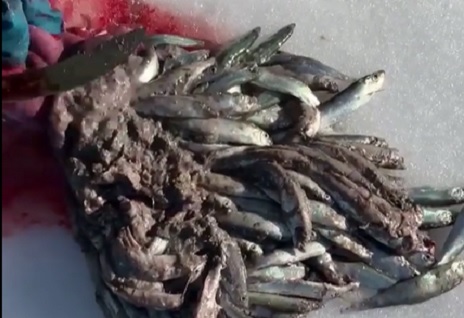
Wow. Just, Wow. A belly full of fish ramps up seal debate
If you have a weak stomach, the video might be difficult to watch. But for fish harvesters in Newfoundland and Labrador, the images of a seal stomach being cut open to reveal a gut full of small herring and Arctic cod is proof enough that seals are a factor in the slow recovery of cod stocks. Last week Dion Weir and a buddy hunted a few seals for personal use in Hall’s Bay, off the Baie Verte Peninsula. They were filled with small fish. “Up in these bays now they’re eating herring and Arctic cod,” Weir said. “Wherever the cod is, the seals are there.” Multiply that by 7.6 million seals,,, >click to read< 15:42

Seal meat takes centre stage at Quebec culinary festival
Chef Jean-Philippe Bourassa-Caron prepares poached eggs and a bordelaise sauce for a new feature at his Chez Boulay restaurant in Quebec City. The sauce and eggs complement an unexpected part of this brunch dish, a meat terrine made with seal. Chez Boulay is one of 20 restaurants in Quebec City, Lévis and Montreal taking part in the second annual Seal Fest, a 10-day culinary festival celebrating seal meat.,,, Seal Fest is a promotion by a Quebec company, SeaDNA, which sells seal meat and seal oil capsules, and by the Seals and Sealing Network, a national non-profit organization that promotes sustainable use of seals. >click to read<15:12
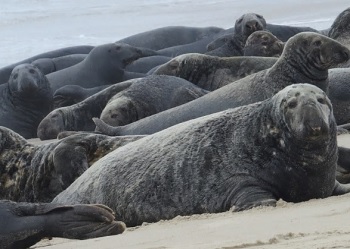
LETTER: Seals to blame
I would like to add my voice to those that disclaim the recent information provided by DFO’s (Department of Fisheries and Oceans) Dr. G. Stenson (In “The cull question: Part I”, published in the Jan. 16 edition of The Central Voice). Seals have destroyed our fisheries in Atlantic Canada and particularly that in Newfoundland and Labrador. The poor condition of harp seals in terms of age, previously measured body mass and survivability of pups, is a direct result of the seal population reaching a threshold capacity level. They are finding it more difficult to find fish (all species) to eat. Thus the recent influx in fresh water river systems — this is not their natural habitat and they are there to consume any fresh water species that might be available (salmon, trout, eels, etc.). We have had a cod moratorium for 26 years,,, Bob Hardy >click to read<
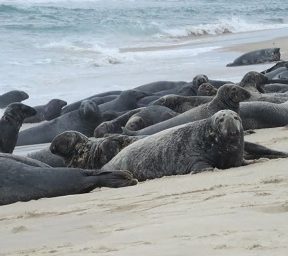
Cod mortality – Northern cod’s fate not the same as southern cousins
There are some fundamental differences between northern cod and their southern gulf cousins that could save the former from extinction, says Dalhousie University professor Jeff Hutchings. That will be a relief to anybody who saw newly published research that predicts Atlantic cod in the Gulf of St. Lawrence could be extinct by 2050.,,, There are a couple of fundamental differences in the two cod populations, Hutchings said, that make the situations difficult to compare. For one, southern gulf cod are being eaten by grey seals, while northern cod are affected by harp seals — a much smaller animal. >click to read<17:50
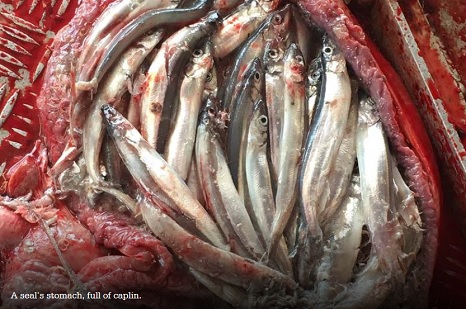
Exploding seal population must be addressed
They say a picture is worth a thousand words here are just a few pictures taken by some people who live near or are always on the ocean every day that suitable. They, like me, can read the ocean. Right now the ocean is crying out for help from the packs of seals that have invaded ever crook and cranny on the shores. They are starving to death and eating everything in their path, these Harp seals should be in the artic by now but instead they are surrounding large shoals of herring and caplin, the food for cod and food for all things in the ocean, and keeping them in shoal water until everyone of them are eaten.How long is the Department of Fisheries and Oceans going to let this go on without addressing this problem? >click to read<19:51

DFO scientists clarify the decline of cod
In a province where the fishery is foundational to its survival, the decline in cod stocks has many worried and searching for clear answers. This announcement was a particular shock as the same assessment in 2016 predicted a considerable increase in cod numbers for this year. But scientists and harvesters who had noted the declines in the cod’s food source, and the many starving fish of last year’s cod fishery, were not as surprised. Research scientist with the department of Fisheries and Oceans Dr. Mariano Koen-Alonso says the sudden and sharp decline in cod stock is something being seen across the ecosystem. >click to read<11:30

Save our seal(er)s – Jim Winter, St. John’s
The population of harp seals off Canada’s East Coast is about 7.5 million. For over 50 years, marine mammal scientists have studied the herd, and from this science annual quotas are set. During this period, the herd has more than tripled in size. The seals we hunt are fully weaned and independent. Harp seal dames feed their offspring for 11 to 15 days and leave them; they are not helicopter parents. The use of anthropomorphic words like “baby” is merely heart-tugging propaganda. The only study portraying the killing as inhumane was paid for by the International Fund for Animal Welfare and conducted by a group of British vets and was never peer-reviewed, as is customary with studies of this kind. Every other study, including one by the International Veterinary Group, has found the hunt to operate as humanely as any slaughterhouse in the Western World. click here to read the letter 16:11
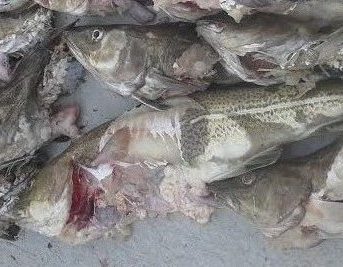
DFO scientist says no ‘strong indications’ seals are gobbling up all the cod
It’s a widespread belief in fishery circles, but one DFO scientist says that for now, you just can’t assume that it’s true. John Brattey says the scientific evidence does not support the notion that seal populations are hindering the rebuilding of cod stocks by gobbling up all the fish. Brattey admits it’s not easy to get good data on the diets of harp seals, but says what studies have been performed do not support the notion. Some evidence can be found just by looking at the recovery rates in the last decade, he said. continue reading the rest, click here 08:43
Why China just may be the seal hunt’s last hope
 If you’re looking for the new Always in Vogue location, it’s just around the corner from Sephora in the mall. Except that the mall is not in St. John’s, where Always in Vogue is best known for its boutique on Water Street. Rather, this mall is in Shenyang, in northern China, the country that is the new hope for an industry that’s seen better days. If St. John’s-based company PhocaLux International’s gamble pays off, next year’s harvest will be significantly greater. Read the article here 10:08
If you’re looking for the new Always in Vogue location, it’s just around the corner from Sephora in the mall. Except that the mall is not in St. John’s, where Always in Vogue is best known for its boutique on Water Street. Rather, this mall is in Shenyang, in northern China, the country that is the new hope for an industry that’s seen better days. If St. John’s-based company PhocaLux International’s gamble pays off, next year’s harvest will be significantly greater. Read the article here 10:08






